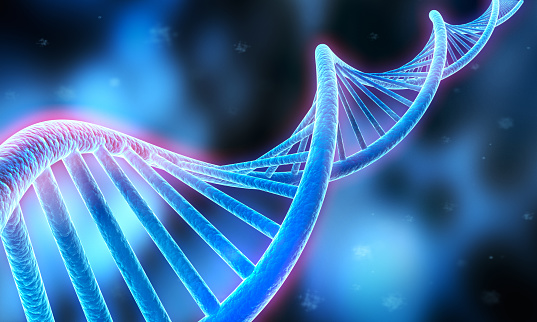Different proteins cause amyloidosis. The abnormal protein involved may determine what symptoms you experience and therefore which treatments are right for you – so getting the diagnosis right is important! There is a particular way of naming amyloidosis, each type is named by:
- an ‘A’ for amyloid, followed by
- the abbreviation for the abnormal protein, and then
- amyloidosis.
For example, ATTR amyloidosis is caused by abnormal transthyretin (abbreviated as TTR) protein, and AL amyloidosis is caused by abnormal light chains (abbreviated as L). Click on a specific amyloidosis type below to learn more.
Types of amyloidosis
Different proteins cause amyloidosis. The abnormal protein involved may determine what symptoms you experience and therefore which treatments are right for you – so getting the diagnosis right is important! There is a particular way of naming amyloidosis, each type is named by:
an ‘A’ for amyloid · followed by the abbreviation for the abnormal protein · and then amyloidosis.
For example, ATTR amyloidosis is caused by abnormal transthyretin (abbreviated as TTR) protein, and AL amyloidosis is caused by abnormal light chains (abbreviated as L). Click on a specific amyloidosis type below to learn more.
AL amyloidosis
AL amyloidosis is caused by abnormal free light chains (FLC). Light chains are part of the structure of antibodies (also called immunoglobulins), which play an important role in the body’s defence against infection (immunity). They are produced in the bone marrow (the soft spongy tissue found in the middle of most bones) by a type of white blood cell called plasma cells. In AL amyloidosis, abnormal plasma cells grow and multiply, and make excessive amounts of abnormal light chains. Instead of forming antibodies these faulty light chains become misfolded and form amyloid deposits in various organs. The pattern of amyloid build-up is different for each person and usually more than one organ is affected. AL amyloidosis can very quickly become life-threatening, so catching it early on is crucial.

Symptoms
Manifestations of AL amyloidosis may include:
- Gradual swelling of your ankles, moving up to your legs
- Fatigue and weakness despite adequate sleep or rest
- Shortness of breath even when doing light exercise or tasks
- Numbness, tingling or pain in your hands and/or feet
- Diarrhoea, often alternating with constipation
- Significant, unintended weight loss
- An enlarged or swollen tongue
- Skin changes such as bruising very easily, especially around the eyes
- Periods of feeling like your heart is racing or skipping a beat

Diagnosing AL amyloidosis
If your doctor thinks you have AL amyloidosis they will want to take a biopsy to confirm the diagnosis. You will have a biopsy of your bone marrow to confirm the diagnosis and measure the extent of the abnormal cells in the bone marrow. Blood and urine tests will show the amount of abnormal light chains, and you’ll have other blood tests and scans to see which organs are affected. You may also have organ biopsies to confirm the presence of amyloid deposits in those organs.

Treating AL amyloidosis
AL amyloidosis treatments are aimed at reducing the amount of abnormal plasma cells, thereby reducing production of abnormal light chains which make amyloid. The hope is that organ function may then begin to recover and that health and quality of life will also improve.
There are many different treatment options for AL amyloidosis, and the choice of which treatment is appropriate for an individual is based on a number of factors such as which organs are affected and how badly, and your general health before you developed amyloidosis. Usually a combination of different classes (or types) of medicines are given, and some of these are listed below.
Chemotherapy
Although AL amyloidosis is not cancer, it is treated similarly to a blood cancer called myeloma. This is because both AL amyloidosis and myeloma are caused by abnormal plasma cells produced in the bone marrow. Chemotherapy medicines are used to kill the plasma cells or stop them from multiplying and spreading in the body. Some examples of chemotherapy medicines for AL amyloidosis are cyclophosphamide and melphalan. These medicines have been used to treat AL amyloidosis for a very long time and their effectiveness and safety have been well established.
Proteasome inhibitors (PIs)
These are a class of medicines that have been used in AL amyloiodsis for about the last 10 to 15 years. Pls help trigger one of the body’s natural processes of killing cells; by doing this, the abnormal plasma cells that are multiplying and spreading uncontrollably are able to be targeted and destroyed by the body. Because they help significantly reduce the amount of abnormal plasma cells, PIs have brought great improvements in patient response to treatment and survival. The main PI given in the UK is bortezomib (Velcade®) which can be given as an injection into the vein or under the skin.
Immunomodulators (IMiDs)
These are drugs that help slow down growth and multiplication of the abnormal plasma cells, and support the immune system in fighting the disease. Lenalidomide (Revlimid®) is available as a capsule and is the most commonly used IMiD in the UK.
Monoclonal antibodies (mabs)
A mab is a medicine that targets and sticks to the abnormal plasma cell and kills it, and also helps the immune system fight the disease. Daratumumab (Darzalex®) is the mab used to treat AL amyloidosis in the UK and can be given via a drip or an injection under the skin.
Corticosteroids (Steroids)
Steroids are always prescribed in conjunction with one or more of the above drugs in the treatment of AL amyloidosis. They help strengthen the effect of these medicines. Steroids are usually prescribed as tablets.

Autologous Stem Cell transplant (ASCT)
ASCT is another treatment option for AL amyloidosis patients. This can be a long and challenging process and is therefore usually appropriate only for those who have been diagnosed early and are in relatively good health.
The first stage involves collecting or ‘harvesting’ your stem cells. The word ‘autologous’ refers to a persons own cells (as opposed to using cells from another person). Before the harvest you’ll be given some medicine to boost the number of stem cells in your blood, and about 5 days later you’ll have a blood test to see if there are enough stem cells in your blood, and if there are, the harvest will begin. You’ll have a needle inserted in a vein in each arm, and tubes like those used for a drip will connect you to a cell separator machine (that looks a bit like a dialysis machine). The cell separator draws out the blood from your one of your arm veins, passes it through a filter that ‘catches’ the stem cells, and then returns the blood to you via the other arm. This procedure usually lasts a few hours, and may be repeated the next day if there weren’t enough stem cells collected on the first attempt. This process may sound scary and invasive but it is painless and apart from nurses and doctors buzzing around, you should be able to read a book or watch a film while its going on.
Stage two of the process can be more challenging. Here you will be given a regimen of high-dose chemotherapy to kill the abnormal plasma cells in the bone marrow. High-dose melphalan is the medicine of choice for ASCT as is highly effective at killing the abnormal cells. However, melphalan will also kill healthy cells in the bone marrow which weakens the immune system, making you more prone to infections. During this period when your immune system is low, you’ll be advised to mimimise contact with other people as you’ll be susceptible to infection, and even the mildest infection could make you quite sick. Your doctor may prescribe protective antibiotics to lower your risk of infection during this time and until your immune system is back to normal.
The final stage of ASCT involves transplanting or returning your stem cells into your bloodstream through a drip via a vein. This is usually a painless process and can take a few hours. Once your stem cells reach your bone marrow they will start to make new cells, and that can happen over a period of about two weeks.
For more information about treatments for AL amyloidosis see the Myeloma UK and Amyloidosis Research Consortium websites.
AL amyloidosis
AL amyloidosis is caused by abnormal free light chains (FLC). Light chains are part of the structure of antibodies (also called immunoglobulins), which play an important role in the body’s defence against infection (immunity). They are produced in the bone marrow (the soft spongy tissue found in the middle of most bones) by a type of white blood cell called plasma cells. In AL amyloidosis, abnormal plasma cells grow and multiply, and make excessive amounts of abnormal light chains. Instead of forming antibodies these faulty light chains become misfolded and form amyloid deposits in various organs. The pattern of amyloid build-up is different for each person and usually more than one organ is affected. AL amyloidosis can very quickly become life-threatening, so catching it early on is crucial.


Symptoms
Manifestations of AL amyloidosis may include:
- Gradual swelling of your ankles, moving up to your legs
- Fatigue and weakness despite adequate sleep or rest
- Shortness of breath even when doing light exercise or tasks
- Numbness, tingling or pain in your hands and/or feet
- Diarrhoea, often alternating with constipation
- Significant, unintended weight loss
- An enlarged or swollen tongue
- Skin changes such as bruising very easily, especially around the eyes
- Periods of feeling like your heart is racing or skipping a beat
Diagnosing AL amyloidosis
If your doctor thinks you have AL amyloidosis they will want to take a biopsy to confirm the diagnosis. You will have a biopsy of your bone marrow to confirm the diagnosis and measure the extent of the abnormal cells in the bone marrow. Blood and urine tests will show the amount of abnormal light chains, and you’ll have other blood tests and scans to see which organs are affected. You may also have organ biopsies to confirm the presence of amyloid deposits in those organs.

Treating AL amyloidosis
AL amyloidosis treatments are aimed at reducing the amount of abnormal plasma cells, thereby reducing production of abnormal light chains which make amyloid. The hope is that organ function may then begin to recover and that health and quality of life will also improve.
There are many different treatment options for AL amyloidosis, and the choice of which treatment is appropriate for an individual is based on a number of factors such as which organs are affected and how badly, and your general health before you developed amyloidosis. Usually a combination of different classes (or types) of medicines are given, and some of these are listed below.
Chemotherapy
Although AL amyloidosis is not cancer, it is treated similarly to a blood cancer called myeloma. This is because both AL amyloidosis and myeloma are caused by abnormal plasma cells produced in the bone marrow. Chemotherapy medicines are used to kill the plasma cells or stop them from multiplying and spreading in the body. Some examples of chemotherapy medicines for AL amyloidosis are cyclophosphamide and melphalan. These medicines have been used to treat AL amyloidosis for a very long time and their effectiveness and safety have been well established.
Proteasome inhibitors (PIs)
These are a class of medicines that have been used in AL amyloiodsis for about the last 10 to 15 years. Pls help trigger one of the body’s natural processes of killing cells; by doing this, the abnormal plasma cells that are multiplying and spreading uncontrollably are able to be targeted and destroyed by the body. Because they help significantly reduce the amount of abnormal plasma cells, PIs have brought great improvements in patient response to treatment and survival. The main PI given in the UK is bortezomib (Velcade®) which can be given as an injection into the vein or under the skin.
Immunomodulators (IMiDs)
These are drugs that help slow down growth and multiplication of the abnormal plasma cells, and support the immune system in fighting the disease. Lenalidomide (Revlimid®) is available as a capsule and is the most commonly used IMiD in the UK.
Monoclonal antibodies (mabs)
A mab is a medicine that targets and sticks to the abnormal plasma cell and kills it, and also helps the immune system fight the disease. Daratumumab (Darzalex®) is the mab used to treat AL amyloidosis in the UK and can be given via a drip or an injection under the skin.
Corticosteroids (Steroids)
Steroids are always prescribed in conjunction with one or more of the above drugs in the treatment of AL amyloidosis. They help strengthen the effect of these medicines. Steroids are usually prescribed as tablets.

Autologous Stem Cell transplant (ASCT)
ASCT is another treatment option for AL amyloidosis patients. This can be a long and challenging process and is therefore usually appropriate only for those who have been diagnosed early and are in relatively good health.
The first stage involves collecting or ‘harvesting’ your stem cells. The word ‘autologous’ refers to a persons own cells (as opposed to using cells from another person). Before the harvest you’ll be given some medicine to boost the number of stem cells in your blood, and about 5 days later you’ll have a blood test to see if there are enough stem cells in your blood, and if there are, the harvest will begin. You’ll have a needle inserted in a vein in each arm, and tubes like those used for a drip will connect you to a cell separator machine (that looks a bit like a dialysis machine). The cell separator draws out the blood from your one of your arm veins, passes it through a filter that ‘catches’ the stem cells, and then returns the blood to you via the other arm. This procedure usually lasts a few hours, and may be repeated the next day if there weren’t enough stem cells collected on the first attempt. This process may sound scary and invasive but it is painless and apart from nurses and doctors buzzing around, you should be able to read a book or watch a film while its going on.
Stage two of the process can be more challenging. Here you will be given a regimen of high-dose chemotherapy to kill the abnormal plasma cells in the bone marrow. High-dose melphalan is the medicine of choice for ASCT as is highly effective at killing the abnormal cells. However, melphalan will also kill healthy cells in the bone marrow which weakens the immune system, making you more prone to infections. During this period when your immune system is low, you’ll be advised to mimimise contact with other people as you’ll be susceptible to infection, and even the mildest infection could make you quite sick. Your doctor may prescribe protective antibiotics to lower your risk of infection during this time and until your immune system is back to normal.
The final stage of ASCT involves transplanting or returning your stem cells into your bloodstream through a drip via a vein. This is usually a painless process and can take a few hours. Once your stem cells reach your bone marrow they will start to make new cells, and that can happen over a period of about two weeks.
For more information about treatments for AL amyloidosis see the Myeloma UK and Amyloidosis Research Consortium websites.
AA amyloidosis
AA amyloidosis develops when a person has a medical condition or other disorder that causes sustained inflammation in the body. The ‘inflammatory response’ is a normal part of the body’s response to infection or other internal threats. During the inflammatory response different chemicals and molecules are activated to deal with the threat, and one of these is called serum amyloid A protein (SAA). SAA is the precursor protein in AA amyloidosis.
SAA is a protein that is normally found in the blood in low concentrations, but production is ramped up when there is inflammation in the body. Some severe rare inflammatory conditions that are caused by genetic mutations lead to a sustained, exaggerated inflammatory response with very high abnormal SAA levels that fluctuate; under these conditions the high SAA levels may lead to amyloid deposition. In some chronic conditions the inflammatory response may not be as pronounced, and SAA levels may remain in the low to medium abnormal range for many years; this long term exposure to moderately elevated SAA levels can also lead to the formation of amyloid deposits. Below are some examples of conditions that are known to have caused AA amyloidosis to develop.
Symptoms of AA amyloidosis
AA amyloidosis mainly affects the kidneys. Common manifestations of kidney dysfunction are:
- Swollen feet and ankles (oedema)
- Foamy or frothy urine
- Fatigue
- Low blood pressure
- Nausea and vomiting
- Dry and itchy skin
- Muscle cramps
- Loss of appetite
Diagnosing AA amyloidosis
Because kidney problems are usually the first manifestation of the condition, your doctor will want to perform a kidney biopsy and examine the kidney tissue under a microscope to look for amyloid deposits. Once amyloid deposits are seen, further tests must be done on the tissue sample to identify exactly what type of amyloidosis you have. This is a crucial step as many types of amyloidosis affect the kidneys, and there are different treatments for different types. Your doctor will also do blood and urine tests to look at how your kidneys are functioning. You may also have tests to look at your heart function; this because the kidneys and heart work closely together so problems with one might lead to problems with the other.

Symptoms of AA amyloidosis
AA amyloidosis mainly affects the kidneys. Common manifestations of kidney dysfunction are:
- Swollen feet and ankles (oedema)
- Foamy or frothy urine
- Fatigue
- Low blood pressure
- Nausea and vomiting
- Dry and itchy skin
- Muscle cramps
- Loss of appetite
Diagnosing AA amyloidosis
Because kidney problems are usually the first manifestation of the condition, your doctor will want to perform a kidney biopsy and examine the kidney tissue under a microscope to look for amyloid deposits. Once amyloid deposits are seen, further tests must be done on the tissue sample to identify exactly what type of amyloidosis you have. This is a crucial step as many types of amyloidosis affect the kidneys, and there are different treatments for different types. Your doctor will also do blood and urine tests to look at how your kidneys are functioning. You may also have tests to look at your heart function; this because the kidneys and heart work closely together so problems with one might lead to problems with the other.
Treating AA amyloidosis
Because AA amyloidosis always develops as a result of another condition, treatment is focused on that underlying condition. If you were already having treatment for the underlying condition before you developed amyloidosis, your doctor might want to switch you to a different, more effective therapy. The aim of treatment is to reduce or resolve the inflammation, which will reduce SAA levels back to normal and in turn will stop amyloid formation and deposition. As long as the inflammation remains under control and no new amyloid is made, and provided that your kidneys weren’t severely damaged by the amyloid, it is possible that kidney function could improve. If the kidneys were too severely damaged you may need to have dialysis and eventually a kidney transplant.
AA amyloidosis
AA amyloidosis develops when a person has a medical condition or other disorder that causes sustained inflammation in the body. The ‘inflammatory response’ is a normal part of the body’s response to infection or other internal threats. During the inflammatory response different chemicals and molecules are activated to deal with the threat, and one of these is called serum amyloid A protein (SAA). SAA is the precursor protein in AA amyloidosis.
SAA is a protein that is normally found in the blood in low concentrations, but production is ramped up when there is inflammation in the body.
Some severe rare inflammatory conditions that are caused by genetic mutations lead to a sustained, exaggerated inflammatory response with very high abnormal SAA levels that fluctuate; under these conditions the high SAA levels may lead to amyloid deposition. In some chronic conditions the inflammatory response may not be as pronounced, and SAA levels may remain in the low to medium abnormal range for many years; this long term exposure to moderately elevated SAA levels can also lead to the formation of amyloid deposits. Below are some examples of conditions that are known to have caused AA amyloidosis to develop.

Symptoms of AA amyloidosis
AA amyloidosis mainly affects the kidneys. Common manifestations of kidney dysfunction are:
- Swollen feet and ankles (oedema)
- Foamy or frothy urine
- Fatigue
- Low blood pressure
- Nausea and vomiting
- Dry and itchy skin
- Muscle cramps
- Loss of appetite
Diagnosing AA amyloidosis
Because kidney problems are usually the first manifestation of the condition, your doctor will want to perform a kidney biopsy and examine the kidney tissue under a microscope to look for amyloid deposits. Once amyloid deposits are seen, further tests must be done on the tissue sample to identify exactly what type of amyloidosis you have. This is a crucial step as many types of amyloidosis affect the kidneys, and there are different treatments for different types. Your doctor will also do blood and urine tests to look at how your kidneys are functioning. You may also have tests to look at your heart function; this because the kidneys and heart work closely together so problems with one might lead to problems with the other.
Treating AA amyloidosis
Because AA amyloidosis always develops as a result of another condition, treatment is focused on that underlying condition. If you were already having treatment for the underlying condition before you developed amyloidosis, your doctor might want to switch you to a different, more effective therapy. The aim of treatment is to reduce or resolve the inflammation, which will reduce SAA levels back to normal and in turn will stop amyloid formation and deposition. As long as the inflammation remains under control and no new amyloid is made, and provided that your kidneys weren’t severely damaged by the amyloid, it is possible that kidney function could improve. If the kidneys were too severely damaged you may need to have dialysis and eventually a kidney transplant.
ATTR amyloidosis
The precursor protein in ATTR amyloidosis is transthyretin, abbreviated to TTR, and is produced mainly in the liver. TTR is what is known as a transport protein, and is named for its function – it transports thyroxine and retinol in the blood. Thyroxin is a hormone made by the thyroid gland, and plays an important role in growth and development; retinol is a form of vitamin A and is important for vision.
There are two types of ATTR amyloidosis – they are caused by different mechanisms, but share many similarities. Hereditary ATTR amyloidosis results from a change in the gene that makes TTR, and this change (also called a variant or mutation) results in the liver making an abnormal form of TTR which then makes amyloid. Wild-type ATTR amyloidosis develops when TTR proteins made in the liver start out normal but then change over time, becoming abnormal and forming amyloid. We’ll go into a bit more detail on each of the two types.
Hereditary ATTR amyloidosis
Also known as hATTR or ATTRv amyloidosis, this type is considered a rare form of the disease when compared to the wild-type. ATTRv is passed down in families through the variant or mutated gene. There are over 130 variants that are known to cause ATTRv amyloidosis, and each variant may have particular manifestations, such as the age at which symptoms start developing and which organs are affected. Also, there are links between certain variants, ethnicity and geography. In the UK the most common variants causing ATTRv amyloidosis are V122I and T60A, but there are many others too. Historically these two variants were thought to mainly affect the heart, but it is now known that both variants can affect other organs and cause a range of symptoms. It’s important to note that while this form of ATTR amyloidosis is hereditary (meaning that people are born with the variant gene), the disease process seems to start in adulthood with symptoms usually appearing after the age of 50, although it can be earlier in some people.
Wild-type ATTR amyloidosis
Wild-type ATTR (ATTRwt) amyloidosis develops when the unchanged (not mutated, ‘normal’) TTR protein becomes abnormal with increasing age and starts to misfolded and form amyloid. The scientific word for the unchanged or normal form of the protein is the ‘wild-type’ protein, hence the name of the condition. ATTRwt is not passed on in families, and although historically it was thought to be a disease exclusive to white men over the age of 75, it is increasingly being found in women and men from different ethnic backgrounds, and as early as 50 years of age.
Symptoms of ATTR amyloidosis
A wide range of symptoms may be caused by ATTR amyloidosis; below is a list of the most common ones that can be experienced by people with both types of ATTR amyloidosis.
- Gradual swelling of your ankles, moving up to your legs
- Periods of feeling like your heart is racing or skipping a beat
- Fatigue and weakness despite adequate sleep or rest
- Shortness of breath even when doing light exercise or tasks
- Trouble walking uphill or up stairs
- Numbness, tingling or pain in your hands and/or feet
- Problems with sex and libido
- Diarrhoea, often alternating with constipation
- Dizziness, especially when standing up suddenly
- Significant, unintended weight loss

Diagnosing ATTR amyloidosis
Historically ATTR amyloidosis could only be diagnosed by biopsy and for some people this was fine but for many, especially those whose hearts were affected (cardiac amyloidosis), a biopsy of the heart would be too risky. Additionally, waiting for a slot to have the biopsy, the subsequent lab analysis, and another doctor’s appointment to get the results, could add many months to the wait for a confirmed diagnosis and treatment. However, a few years ago a group of HCPs and scientists from different countries, led by the team at the UK National Amyloidosis Centre (NAC) developed a way of accurately diagnosing cardiac ATTR amyloidosis using a series of easily available and less invasive tests (scans and blood and urine tests), thereby eliminating the need for a heart biopsy in most cases. This has made it quicker and easier to diagnose cardiac ATTR amyloidosis, and at times help differentiate between AL and ATTR cardiac amyloidosis – an important distinction as the two types are treated very differently.

Treating ATTR amyloidosis
Until 2018 there were no medicinal treatments for ATTR amyloidosis available in the UK outside of clinical trials. Some patients with ATTRv were able to have a liver transplant; this would remove the main source of the abnormal TTR protein and replace it with a donated liver from someone without the gene mutation hence, a liver that makes normal TTR. Having an organ transplant is not a viable option for most people as it’s an invasive and high-risk procedure, and you would have to be in fairly good health to be eligible to have this. Furthermore, although the vast majority of TTR is made in the liver some is made in the brain, and this source of variant TTR will continue and amyloid deposits will keep developing, albeit at a slower rate.
In some countries liver transplant is still offered to ATTRv patients who are diagnosed at a very early stage and therefore have only mild symptoms, but in the UK there are now medicines available to effectively treat both ATTRv and ATTRwt. These medicines fall into two main classes:
1. Tetramer stabilisers (Stabilisers)
These are small molecule medicines that help keep the TTR protein from breaking apart. The TTR protein is made up of four units or pieces joined together. In the abnormal or diseased form the protein is unstable and prone to breaking apart into its four units. The individual units misfold and form amyloidosis. Stabilisers like tafamidis (Vyndaqel® and Vyndamax®) and acoramidis (AG10) bind to the TTR protein, for a period of time stopping it from breaking up, thereby reducing or slowing down the formation of amyloid deposits.
2. Gene silencers (Silencers)
These are a whole new class of medicines that have been developed in recent years. These drugs work at the source of the disease, by stopping the TTR gene from making the abnormal protein (i.e. silencing the gene). There are currently two treatments in this category, vutrisiran (Amvuttra®) and eplontersen (Wainzua®) – they work in slightly different ways but have the same effect of significantly reducing the amount of abnormal TTR in the body, thereby stopping or slowing down the build up of amyloid.
ATTR amyloidosis
The precursor protein in ATTR amyloidosis is transthyretin, abbreviated to TTR, and is produced mainly in the liver. TTR is what is known as a transport protein, and is named for its function – it transports thyroxine and retinol in the blood. Thyroxin is a hormone made by the thyroid gland, and plays an important role in growth and development; retinol is a form of vitamin A and is important for vision.
There are two types of ATTR amyloidosis — they are caused by different mechanisms, but share many similarities. Hereditary ATTR amyloidosis results from a change in the gene that makes TTR, and this change (also called a variant or mutation) results in the liver making an abnormal form of TTR which then makes amyloid. Wild-type ATTR amyloidosis develops when TTR proteins made in the liver start out normal but then change over time, becoming abnormal and forming amyloid. We’ll go into a bit more detail on each of the two types.
Hereditary ATTR amyloidosis
Also known as hATTR or ATTRv amyloidosis, this type is considered a rare form of the disease when compared to the wild-type. ATTRv is passed down in families through the variant or mutated gene. There are over 130 variants that are known to cause ATTRv amyloidosis, and each variant may have particular manifestations, such as the age at which symptoms start developing and which organs are affected. Also, there are links between certain variants, ethnicity and geography. In the UK the most common variants causing ATTRv amyloidosis are V122I and T60A, but there are many others too. Historically these two variants were thought to mainly affect the heart, but it is now known that both variants can affect other organs and cause a range of symptoms. It’s important to note that while this form of ATTR amyloidosis is hereditary (meaning that people are born with the variant gene), the disease process seems to start in adulthood with symptoms usually appearing after the age of 50, although it can be earlier in some people.
Wild-type ATTR amyloidosis
Wild-type ATTR (ATTRwt) amyloidosis develops when the unchanged (not mutated, ‘normal’) TTR protein becomes abnormal with increasing age and starts to misfolded and form amyloid. The scientific word for the unchanged or normal form of the protein is the ‘wild-type’ protein, hence the name of the condition. ATTRwt is not passed on in families, and although historically it was thought to be a disease exclusive to white men over the age of 75, it is increasingly being found in women and men from different ethnic backgrounds, and as early as 50 years of age.

Symptoms of ATTR amyloidosis
A wide range of symptoms may be caused by ATTR amyloidosis; below is a list of the most common ones that can be experienced by people with both types of ATTR amyloidosis.
- Gradual swelling of your ankles, moving up to your legs
- Periods of feeling like your heart is racing or skipping a beat
- Fatigue and weakness despite adequate sleep or rest
- Shortness of breath even when doing light exercise or tasks
- Trouble walking uphill or up stairs
- Numbness, tingling or pain in your hands and/or feet
- Problems with sex and libido
- Diarrhoea, often alternating with constipation
- Dizziness, especially when standing up suddenly
- Significant, unintended weight loss
Diagnosing ATTR amyloidosis
Historically ATTR amyloidosis could only be diagnosed by biopsy and for some people this was fine but for many, especially those whose hearts were affected (cardiac amyloidosis), a biopsy of the heart would be too risky. Additionally, waiting for a slot to have the biopsy, the subsequent lab analysis, and another doctor’s appointment to get the results, could add many months to the wait for a confirmed diagnosis and treatment. However, a few years ago a group of HCPs and scientists from different countries, led by the team at the UK National Amyloidosis Centre (NAC) developed a way of accurately diagnosing cardiac ATTR amyloidosis using a series of easily available and less invasive tests (scans and blood and urine tests), thereby eliminating the need for a heart biopsy in most cases. This has made it quicker and easier to diagnose cardiac ATTR amyloidosis, and at times help differentiate between AL and ATTR cardiac amyloidosis – an important distinction as the two types are treated very differently.

Treating ATTR amyloidosis
Until 2018 there were no medicinal treatments for ATTR amyloidosis available in the UK outside of clinical trials. Some patients with ATTRv were able to have a liver transplant; this would remove the main source of the abnormal TTR protein and replace it with a donated liver from someone without the gene mutation hence, a liver that makes normal TTR. Having an organ transplant is not a viable option for most people as it’s an invasive and high-risk procedure, and you would have to be in fairly good health to be eligible to have this. Furthermore, although the vast majority of TTR is made in the liver some is made in the brain, and this source of variant TTR will continue and amyloid deposits will keep developing, albeit at a slower rate.
In some countries liver transplant is still offered to ATTRv patients who are diagnosed at a very early stage and therefore have only mild symptoms, but in the UK there are now medicines available to effectively treat both ATTRv and ATTRwt. These medicines fall into two main classes:
AFib amyloidosis
Fibrinogen is the precursor protein in this type of amyloidosis which mainly affects the kidneys. Fibrinogen is produced in the liver and plays an important role in blood clotting, inflammation and wound healing. AFib amyloidosis is a hereditary condition – it is caused by variants in the fibrinogen gene that result in the liver making abnormal fibrinogen that misfolds and forms amyloid. This variant or mutation may be passed down in families from parent to child.

Symptoms of AFib amyloidosis
Because AFib amyloidosis mainly affects the kidneys the symptoms that patients first experience are related to kidney dysfunction. The main ones are:
- Swollen feet and ankles (oedema)
- Foamy or frothy urine
- Fatigue
- Low blood pressure
- Nausea and vomiting
- Dry and itchy skin
- Muscle cramps
- Loss of appetite

Diagnosing AFib amyloidosis
Because kidney problems are usually the first manifestation of the condition, your doctor will want to perform a kidney biopsy and examine the kidney tissue under a microscope to look for amyloid deposits. Once amyloid deposits are seen, further tests must be done on the tissue sample to identify exactly what type of amyloidosis you have. However, if there are other members of the family who have had similar problems, or who have been diagnosed with type of amyloidosis, you’ll have a genetic test to see if you carry the genetic variant, and this might be sufficient to confirm the diagnosis of AFib.
Treating AFib amyloidosis
At present there are no medicinal treatments for AFib amyloidosis. Because the liver is the only source of the abnormal fibrinogen protein, liver transplantation is at present the only successful treatment for this condition, provided the procedure is done before the kidneys sustain significant and irreversible damage. When kidney function becomes significantly impaired you will be started on dialysis until a kidney transplant becomes possible. At this stage a combined liver and kidney transplant is the only way forward – if the liver is not replaced it will simply continue to make abnormal fibrinogen and amyloid will deposit in the new kidney and it too will eventually fail.
AFib amyloidosis
Fibrinogen is the precursor protein in this type of amyloidosis which mainly affects the kidneys. Fibrinogen is produced in the liver and plays an important role in blood clotting, inflammation and wound healing. AFib amyloidosis is a hereditary condition – it is caused by variants in the fibrinogen gene that result in the liver making abnormal fibrinogen that misfolds and forms amyloid. This variant or mutation may be passed down in families from parent to child.


Symptoms of AFib amyloidosis
Because AFib amyloidosis mainly affects the kidneys the symptoms that patients first experience are related to kidney dysfunction. The main ones are:
- Swollen feet and ankles (oedema)
- Foamy or frothy urine
- Fatigue
- Low blood pressure
- Nausea and vomiting
- Dry and itchy skin
- Muscle cramps
- Loss of appetite
Diagnosing AFib amyloidosis
Because kidney problems are usually the first manifestation of the condition, your doctor will want to perform a kidney biopsy and examine the kidney tissue under a microscope to look for amyloid deposits. Once amyloid deposits are seen, further tests must be done on the tissue sample to identify exactly what type of amyloidosis you have. However, if there are other members of the family who have had similar problems, or who have been diagnosed with type of amyloidosis, you’ll have a genetic test to see if you carry the genetic variant, and this might be sufficient to confirm the diagnosis of AFib.
Treating AFib amyloidosis
At present there are no medicinal treatments for AFib amyloidosis. Because the liver is the only source of the abnormal fibrinogen protein, liver transplantation is at present the only successful treatment for this condition, provided the procedure is done before the kidneys sustain significant and irreversible damage. When kidney function becomes significantly impaired you will be started on dialysis until a kidney transplant becomes possible. At this stage a combined liver and kidney transplant is the only way forward – if the liver is not replaced it will simply continue to make abnormal fibrinogen and amyloid will deposit in the new kidney and it too will eventually fail.
AApoA1 amyloidosis
AApoA1 amyloiodosis is the third most common type of hereditary amyloidosis diagnosed in the UK. Apolipoproteins are produced mainly in the liver (about 50%), and their role is to bind and transport other substances in the body. ApoA1 is the main component of HDL (the good type of cholesterol) in the blood, and also plays many other important roles in the body. Mutations in the ApoA1 gene cause the abnormal AApoA1 to misfold and form amyloid deposits mainly in the kidneys, heart and liver.

Symptoms of AApoA1 amyloidosis
Manifestations of AApoA1 are consistent with which organ or organs are mostly affected. Common symptoms of kidney, heart and liver dysfunction are:
- Swollen feet and ankles (oedema)
- Foamy or frothy urine
- Fatigue and weakness despite adequate sleep or rest
- Periods of feeling like your heart is racing or skipping a beat
- Shortness of breath even when doing light exercise or tasks
- Trouble walking uphill or up stairs
- Poor appetite
- Nausea and vomiting
- Itchy skin
- Yellowing of the skin and whites of eyes

Diagnosing AApoA1 amyloidosis
AApoA1 amyloidosis is a hereditary condition and so can be relatively quickly diagnosed if detailed family medical information is available. If one or more others in the family have or had similar symptoms, a genetic test can easily confirm the diagnosis. Your doctor may want to take a biopsy to make sure that it’s is the AApoA1 that is causing your symptoms and not some other disease. If you have no knowledge of your family’s medical history, then a biopsy, together with results from other blood and urine tests and scans will be needed to provide an accurate diagnosis.
Treating AApoA1 amyloidosis
Organ transplant is the only available treatment option for this type of amyloidosis. As much of the abnormal AApoA1 is produced by the liver, liver transplant can help slow down the amyloid deposition and therefore the overall disease. Kidney transplant tends to be successful as the new kidney can last for a decade or two unlike some other more aggressive types of amyloidosis like AL for instance. If your kidneys and heart are badly affected you may need to have a combined kidney and heart transplant, which means having both organs transplanted at the same time. Combined kidney and liver transplant can be another option. Of course, single organ transplant can also be done, and depending on you health you may go for many years before needing another transplant.
AApoA1 amyloidosis
AApoA1 amyloiodosis is the third most common type of hereditary amyloidosis diagnosed in the UK. Apolipoproteins are produced mainly in the liver (about 50%), and their role is to bind and transport other substances in the body. ApoA1 is the main component of HDL (the good type of cholesterol) in the blood, and also plays many other important roles in the body. Mutations in the ApoA1 gene cause the abnormal AApoA1 to misfold and form amyloid deposits mainly in the kidneys, heart and liver.


Symptoms of AApoA1 amyloidosis
Manifestations of AApoA1 are consistent with which organ or organs are mostly affected. Common symptoms of kidney, heart and liver dysfunction are:
- Swollen feet and ankles (oedema)
- Foamy or frothy urine
- Fatigue and weakness despite adequate sleep or rest
- Periods of feeling like your heart is racing or skipping a beat
- Shortness of breath even when doing light exercise or tasks
- Trouble walking uphill or up stairs
- Poor appetite
- Nausea and vomiting
- Itchy skin
- Yellowing of the skin and whites of eyes
Diagnosing AApoA1 amyloidosis
AApoA1 amyloidosis is a hereditary condition and so can be relatively quickly diagnosed if detailed family medical information is available. If one or more others in the family have or had similar symptoms, a genetic test can easily confirm the diagnosis. Your doctor may want to take a biopsy to make sure that it’s is the AApoA1 that is causing your symptoms and not some other disease. If you have no knowledge of your family’s medical history, then a biopsy, together with results from other blood and urine tests and scans will be needed to provide an accurate diagnosis.
Treating AApoA1 amyloidosis
Organ transplant is the only available treatment option for this type of amyloidosis. As much of the abnormal AApoA1 is produced by the liver, liver transplant can help slow down the amyloid deposition and therefore the overall disease. Kidney transplant tends to be successful as the new kidney can last for a decade or two unlike some other more aggressive types of amyloidosis like AL for instance. If your kidneys and heart are badly affected you may need to have a combined kidney and heart transplant, which means having both organs transplanted at the same time. Combined kidney and liver transplant can be another option. Of course, single organ transplant can also be done, and depending on you health you may go for many years before needing another transplant.
AGel amyloidosis
Gelsolin is the precursor protein in this type of hereditary amyloidosis. Gelsolin is made in the muscles and plays an important role in the structure of cells that make up the different tissues in the body; it also plays a part in wound healing. In AGel amyloidosis a genetic mutation in the gelsolin gene results in abnormal gelsolin which forms amyloid deposits. This most commonly affects the nerves, eyes and skin; in some patients the kidneys and heart can also be affected.

Symptoms of AGel amyloidosis
A wide range of symptoms can accompany AGel amyloidosis. Some of the more common ones are:
- Gradual deterioration of vision
- Droopy eyelids
- Dry eyes and mouth
- Loss of movement in the face (facial palsy or paralysis)
- Easy bruising
- Dry, itchy skin
- Pain, tingling and weakness of the hands
- Problems with balance and movement

Diagnosing AGel amyloidosis
Because AGel amyloidosis is a hereditary condition, it can be quickly diagnosed by a genetic test if one or more others in the family have similar symptoms. The typical triad of eye, skin and nerve symptoms are the hallmark of AGel amyloidosis and therefore make it somewhat easier to diagnose than other types. Your doctor may want to take a biopsy to make sure that it’s is the AGel that is causing your symptoms and not some other disease. If you have no knowledge of your family’s medical history, then a biopsy, together with results from other blood and urine tests and scans will be needed to provide an accurate diagnosis.
Treating AGel amyloidosis
AGel amyloidosis treatment is targeted at alleviating the symptoms of the condition. Skin creams and eye drops can help and are easily accessible. Patients may have surgery to address some of the manifestations like droopy skin, and carpal tunnel release surgery can help with the hand symptoms. Often patients find that the surgeries have to be repeated over time – because there aren’t any DMTs available to stop the abnormal gelsolin forming amyloid deposits, the symptoms tend to recur. Therefore, the surgical burden of AGel amyloidosis tends to be a challenge for those living with the condition.
AGel amyloidosis
Gelsolin is the precursor protein in this type of hereditary amyloidosis. Gelsolin is made in the muscles and plays an important role in the structure of cells that make up the different tissues in the body; it also plays a part in wound healing. In AGel amyloidosis a genetic mutation in the gelsolin gene results in abnormal gelsolin which forms amyloid deposits. This most commonly affects the nerves, eyes and skin; in some patients the kidneys and heart can also be affected.


Symptoms of AGel amyloidosis
A wide range of symptoms can accompany AGel amyloidosis. Some of the more common ones are:
- Gradual deterioration of vision
- Droopy eyelids
- Dry eyes and mouth
- Loss of movement in the face (facial palsy or paralysis)
- Easy bruising
- Dry, itchy skin
- Pain, tingling and weakness of the hands
- Problems with balance and movement
Diagnosing AGel amyloidosis
Because AGel amyloidosis is a hereditary condition, it can be quickly diagnosed by a genetic test if one or more others in the family have similar symptoms. The typical triad of eye, skin and nerve symptoms are the hallmark of AGel amyloidosis and therefore make it somewhat easier to diagnose than other types. Your doctor may want to take a biopsy to make sure that it’s is the AGel that is causing your symptoms and not some other disease. If you have no knowledge of your family’s medical history, then a biopsy, together with results from other blood and urine tests and scans will be needed to provide an accurate diagnosis.
Treating AGel amyloidosis
AGel amyloidosis treatment is targeted at alleviating the symptoms of the condition. Skin creams and eye drops can help and are easily accessible. Patients may have surgery to address some of the manifestations like droopy skin, and carpal tunnel release surgery can help with the hand symptoms. Often patients find that the surgeries have to be repeated over time – because there aren’t any DMTs available to stop the abnormal gelsolin forming amyloid deposits, the symptoms tend to recur. Therefore, the surgical burden of AGel amyloidosis tends to be a challenge for those living with the condition.
ALys amyloidosis
This is a very rare form of hereditary amyloidosis where a mutation in the gene for the lysozyme protein results in an abnormal, amyloid-forming protein. Lysozyme can be found all over the body, but is produced in the liver, gut and by some immune cells. Lysozyme plays a role in fighting bacterial infection, however it’s usual role outside of that is not known. ALys amyloid deposits most commonly affect the kidneys, liver and gut.

Symptoms of ALys amyloidosis
Symptoms may vary in terms of how severely they affect each person, but most commonly are:
- Chronic tummy (abdominal) pain
- Problems with digesting food
- Diarrhoea
- Bleeding from the stomach and gut
- Swollen feet and ankles (oedema)
- Foamy or frothy urine
- Fatigue
- Bleeding from the liver
Sudden and severe bleeding from the stomach, liver and gut can be a life-threatening situation, so and early diagnosis and regular check-ups are important to prevent this from happening.

Diagnosing ALys amyloidosis
ALys amyloidosis is a hereditary condition and so can be relatively quickly diagnosed if detailed family medical information is available. If one or more others in the family have or had similar symptoms, a genetic test can easily confirm the diagnosis. Your doctor may want to take a biopsy to make sure that it’s is the ALys that is causing your symptoms and not some other disease. If you have no knowledge of your family’s medical history, then a biopsy, together with results from other blood and urine tests and scans will be needed to provide an accurate diagnosis.
Treating ALys amyloidosis
Currently, the goal of treating this condition is palliative, meaning to treat the symptoms, alleviate pain and preserve quality of life. For example, if you have digestive problems that are causing you to become malnourished, you will be referred to dietetics services who can help you make helpful changes to your diet, and provide supplements to boost your nutrition. In more serious cases you might need to be admitted to hospital and fed through a tube that goes down your nose into your stomach (nasogastric tube). Once your health has improved and you are preparing for discharge, your doctor will insert a tube directly into your stomach, called a PEG tube. This will help you maintain a healthy diet whilst carrying on with life as usual, as the feeding tube will be hidden under your clothes (as opposed to hanging out of your nose!).
For patients with kidney failure, having a kidney transplant could be an option because in ALys the amyloid deposits tend to build up very slowly, so compared to other types of amyloidosis, the new kidney might remain healthy for many years, helping you enjoy an improved quality of life for some time. In the more severe situations where there is internal bleeding from the liver, a liver transplant might be the only life-saving option. Unlike some hereditary amyloidosis types where a liver transplant may stop the disease from getting worse, in ALys the abnormal lysozyme is also made by other cells and organs, so removing the liver won’t stop the disease. In ALys a liver transplant would be considered palliative.
This section is under development. We will be adding more information over the coming weeks and months so please do visit the site periodically. You can also get in touch to request more information or suggest other topics.
ALys amyloidosis
This is a very rare form of hereditary amyloidosis where a mutation in the gene for the lysozyme protein results in an abnormal, amyloid-forming protein. Lysozyme can be found all over the body, but is produced in the liver, gut and by some immune cells. Lysozyme plays a role in fighting bacterial infection, however it’s usual role outside of that is not known. ALys amyloid deposits most commonly affect the kidneys, liver and gut.


Symptoms of ALys amyloidosis
Symptoms may vary in terms of how severely they affect each person, but most commonly are:
- Chronic tummy (abdominal) pain
- Problems with digesting food
- Diarrhoea
- Bleeding from the stomach and gut
- Swollen feet and ankles (oedema)
- Foamy or frothy urine
- Fatigue
- Bleeding from the liver
Sudden and severe bleeding from the stomach, liver and gut can be a life-threatening situation, so and early diagnosis and regular check-ups are important to prevent this from happening.
Diagnosing ALys amyloidosis
ALys amyloidosis is a hereditary condition and so can be relatively quickly diagnosed if detailed family medical information is available. If one or more others in the family have or had similar symptoms, a genetic test can easily confirm the diagnosis. Your doctor may want to take a biopsy to make sure that it’s is the ALys that is causing your symptoms and not some other disease. If you have no knowledge of your family’s medical history, then a biopsy, together with results from other blood and urine tests and scans will be needed to provide an accurate diagnosis.
Treating ALys amyloidosis
AGel amyloidosis treatment is targeted at alleviating the symptoms of the condition. Skin creams and eye drops can help and are easily accessible. Patients may have surgery to address some of the manifestations like droopy skin, and carpal tunnel release surgery can help with the hand symptoms. Often patients find that the surgeries have to be repeated over time – because there aren’t any DMTs available to stop the abnormal gelsolin forming amyloid deposits, the symptoms tend to recur. Therefore, the surgical burden of AGel amyloidosis tends to be a challenge for those living with the condition.
For patients with kidney failure, having a kidney transplant could be an option because in ALys the amyloid deposits tend to build up very slowly, so compared to other types of amyloidosis, the new kidney might remain healthy for many years, helping you enjoy an improved quality of life for some time. In the more severe situations where there is internal bleeding from the liver, a liver transplant might be the only life-saving option. Unlike some hereditary amyloidosis types where a liver transplant may stop the disease from getting worse, in ALys the abnormal lysozyme is also made by other cells and organs, so removing the liver won’t stop the disease. In ALys a liver transplant would be considered palliative.
